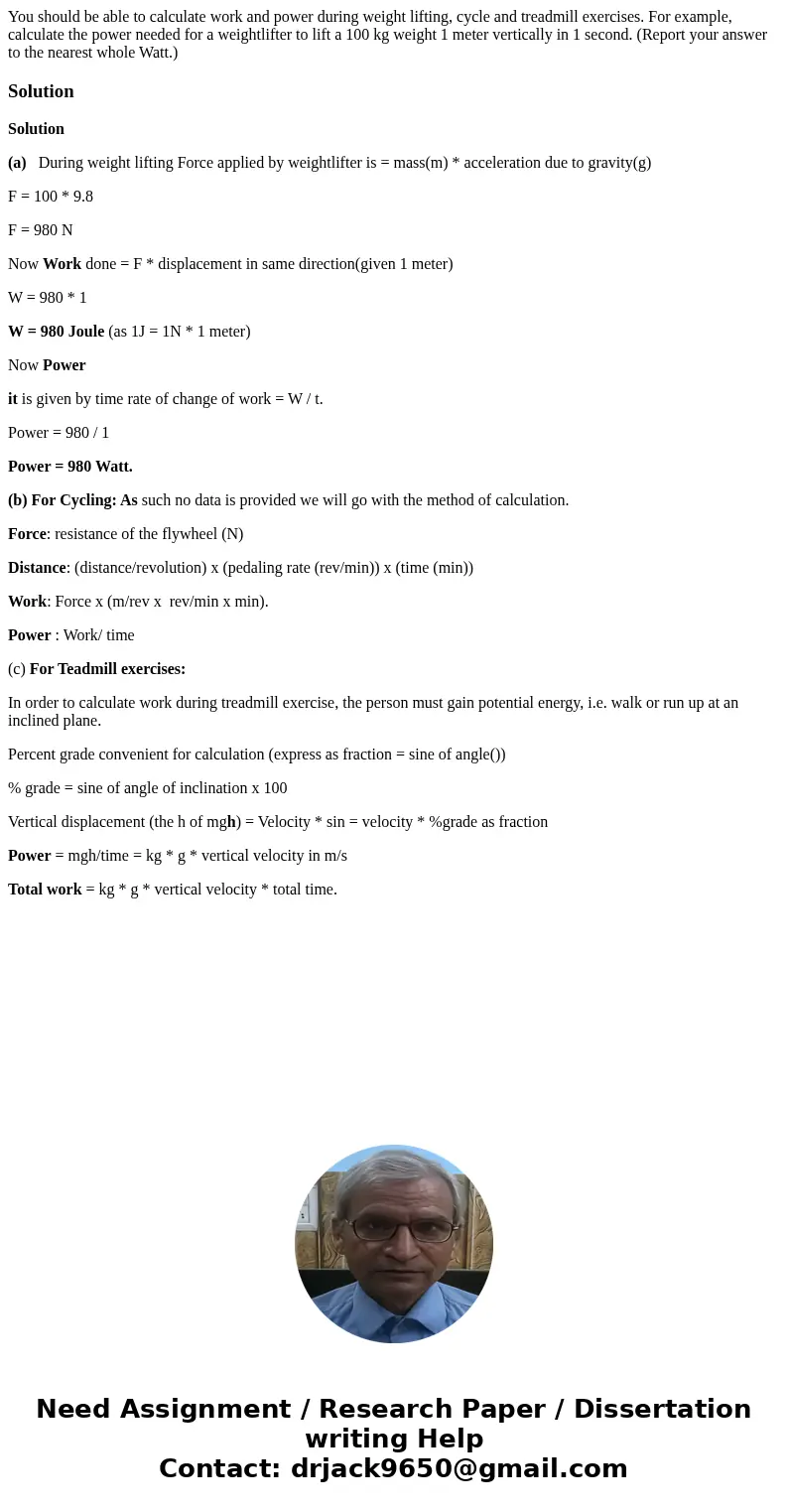You should be able to calculate work and power during weight
You should be able to calculate work and power during weight lifting, cycle and treadmill exercises. For example, calculate the power needed for a weightlifter to lift a 100 kg weight 1 meter vertically in 1 second. (Report your answer to the nearest whole Watt.)
Solution
Solution
(a) During weight lifting Force applied by weightlifter is = mass(m) * acceleration due to gravity(g)
F = 100 * 9.8
F = 980 N
Now Work done = F * displacement in same direction(given 1 meter)
W = 980 * 1
W = 980 Joule (as 1J = 1N * 1 meter)
Now Power
it is given by time rate of change of work = W / t.
Power = 980 / 1
Power = 980 Watt.
(b) For Cycling: As such no data is provided we will go with the method of calculation.
Force: resistance of the flywheel (N)
Distance: (distance/revolution) x (pedaling rate (rev/min)) x (time (min))
Work: Force x (m/rev x rev/min x min).
Power : Work/ time
(c) For Teadmill exercises:
In order to calculate work during treadmill exercise, the person must gain potential energy, i.e. walk or run up at an inclined plane.
Percent grade convenient for calculation (express as fraction = sine of angle())
% grade = sine of angle of inclination x 100
Vertical displacement (the h of mgh) = Velocity * sin = velocity * %grade as fraction
Power = mgh/time = kg * g * vertical velocity in m/s
Total work = kg * g * vertical velocity * total time.

 Homework Sourse
Homework Sourse